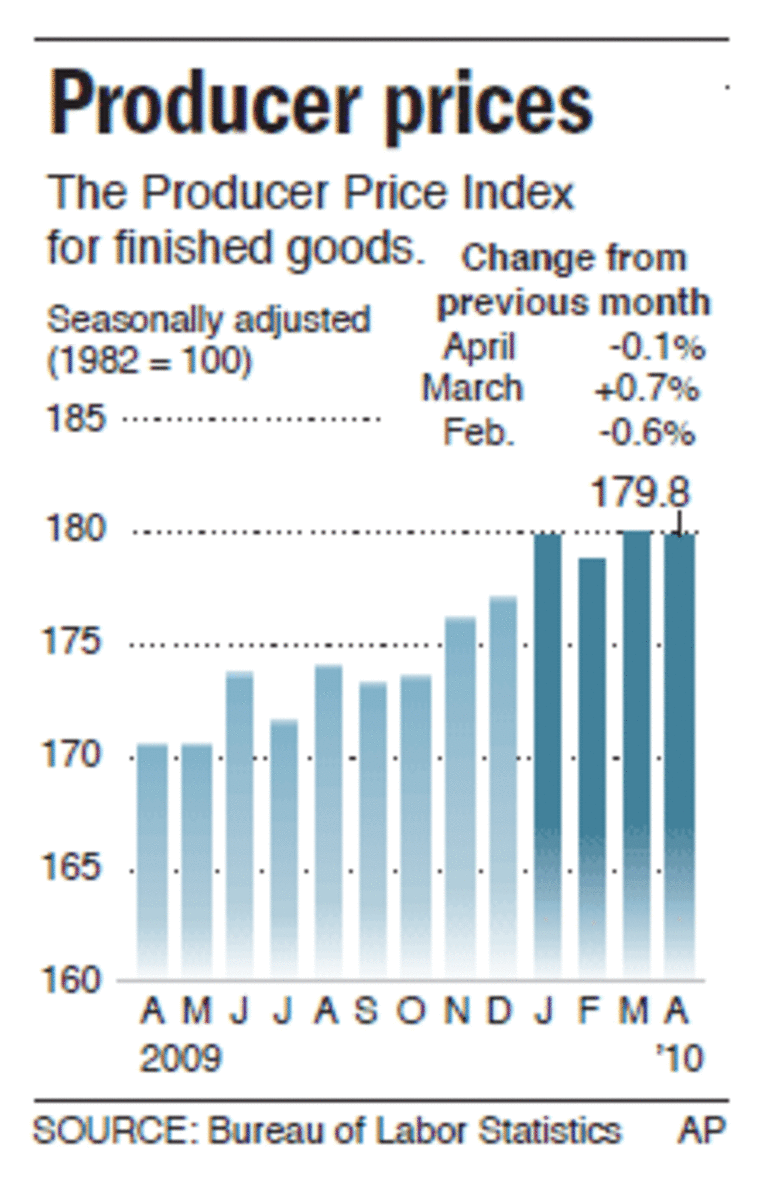Prices at the wholesale level fell in April, reflecting declines in energy and food.
The Labor Department said Tuesday that wholesale prices edged down 0.1 percent last month, the second decline in the past three months. Core inflation, which excludes energy and food, rose 0.2 percent, slightly faster than expected. But over the past year, core prices are up just 1 percent.
The absence of inflation pressures means the Federal Reserve can continue to keep interest rates at record lows to bolster the economic recovery.
For April, food costs dipped by 0.2 percent. It was the first decline in nine months and came after a 2.4 percent surge during the previous month — the largest gain in 26 years. The March increase reflected the impact of a winter freeze in Florida that heavily damaged citrus and vegetable crops.
Energy prices fell 0.8 percent in April with gasoline prices down 2.7 percent.
The 0.2 percent rise in core inflation, which excludes volatile energy and food prices, followed two straight months of 0.1 percent gains.

Household appliances posted a 1.9 percent jump, the largest since October 1974. Passenger car prices rose 0.6 percent, the biggest increase since June 2009.
Economists believe that the report on consumer prices, which will be released on Wednesday, will also show slight price pressures. They are predicting overall prices and core inflation will both post 0.1 percent gains.
The recession has banished inflation for the time being. The more than 8 million jobs lost over the past two years has left workers without the bargaining power to boost wages.
In addition, companies, facing slack demand and idle plant capacity, have not had the power to raise the price of their products.
The absence of inflation has allowed the Fed to keep its benchmark federal funds rate at a record low of zero to 0.25 percent since December 2008, as the central bank has worked to jump-start economic growth.
Some Fed officials have argued that the greater threat at the moment is the risk of deflation, or a debilitating drop in prices. That is something the United States has not seen since the Great Depression.